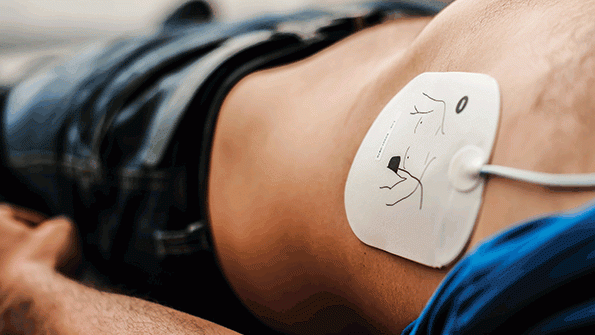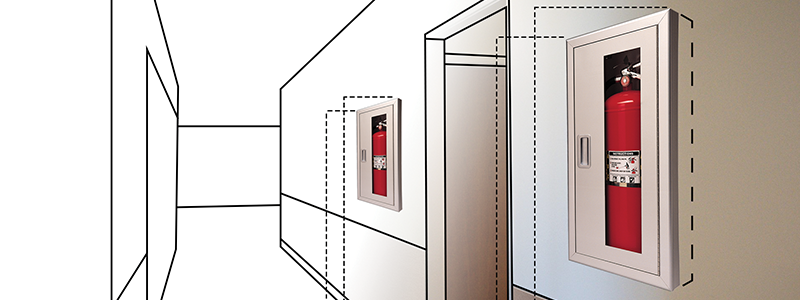Sudden cardiac arrest can happen to almost anyone anywhere, including work. Will your employees know what to do if a co-worker experiences this life-threatening situation?
What is in this article?:
- Are You Prepared to Address Sudden Cardiac Arrest in Your Workplace?

The mantra, “better to be safe than sorry,” couldn’t be more applicable to workplace safety. While organizations plan for a multitude of potential scenarios that could threaten the safety of employees –ranging from health epidemics to natural disasters – they often overlook cardiac arrest. Surprisingly, sudden cardiac arrest (SCA), one of the leading causes of deaths in the United States, is not currently standardized by OSHA. As a result, facility managers charged with workplace safety are ill-prepared to deal with this non-regulated but very important scenario that puts lives on the line.
According to the American Red Cross, SCA kills more than 350,000 people each year, and it can happen to anyone, anytime, at any age. It can take emergency responders an average of 8 to 12 minutes to arrive after a 911 call is made. If an employee goes into cardiac arrest, each minute that defibrillation is delayed will reduce the chance of survival by 7-10 percent.
An automated external defibrillator (AED) combined with CPR is the most effective way to restore a person’s heartbeat during SCA, and when administered within two minutes of the event, chances of survival increase by 90 percent. Not only that, AEDs are incredibly easy to operate for someone with no medical experience.
Having an AED on Site
The decision to have an AED handy and installed in the building typically is the domain of the workplace facility or safety manager. When installing an AED in an office environment, the first step is to ensure compliance with any local, state and industry regulations.
For example, safety managers who work in public buildings in the state of New York must have an AED on site. However, office safety professionals in states like Hawaii and Maine can do as they please, as there are no standing requirements for AED installation, registration or training. Each state has its own legislation when it comes to safety codes. It’s important that office safety personnel familiarize themselves with the regulations that are relevant to their industry and geographic location.
Lack of preparedness for SCA validates why abiding by the law is merely one aspect of managing risk. Meeting statutory requirements does not necessarily fulfill an organization’s responsibilities for ensuring the safety of its workers.
It’s important to take a step back and employ a little common sense when it comes to workplace safety. There are many considerations beyond the law, such as employee expectations, organizational values, industry norms and ramifications that should be taken into consideration when developing a safety plan.
Maximizing AED Value
In order to maximize the value from an AED program, it’s important to ensure that the AED kit is well-equipped with a pair of adult defibrillator pads; includes wall-mountable cabinet with an alarm, quick-use card and user manual; and perhaps most importantly, offers a fully charged battery pack.
AEDs should be placed in the facility so that retrieval to any possible victim location takes no more than 3 minutes. When a cardiac emergency happens, there is no one spot more likely than another, and time is of the essence. Cafeterias, breakrooms, fitness areas and other communal spaces often are good locations to install AEDs. Most importantly, safety managers need to make sure the AED is easy to see and access.
As with any safety program, employees should be trained in the proper use of an AED. Thankfully, due to advances in technology, automatic and semi-automatic AEDs have become seamless to use, with the AED assessing the victim’s situation and making all of the critical decisions.With the availability of self-training modules, real-time audio and video instruction and maintenance reminders, AEDs shouldn’t intimidate anyone. Liability should never be a deterrent to assisting with the use of an AED, and Good Samaritan laws are in place throughout the country.
With high expectations for safety and care in the workplace, organizations must be prepared to deal with all types of crises at any given time. As a facility manager or workplace safety expert, be sure to take your lead from state laws, OSHA requirements, industry regulations and the expected levels of care that exist within your facilities. Be sure to make safety preparations as comprehensive as possible; a life could depend on it.
Remember: It’s far easier to prepare for an emergency than to have to explain why you didn’t.



